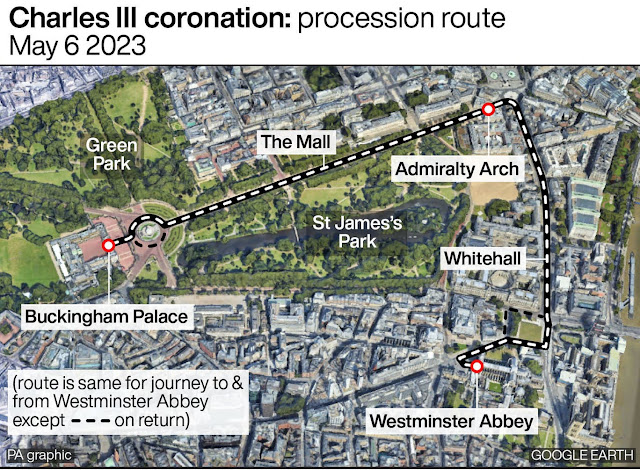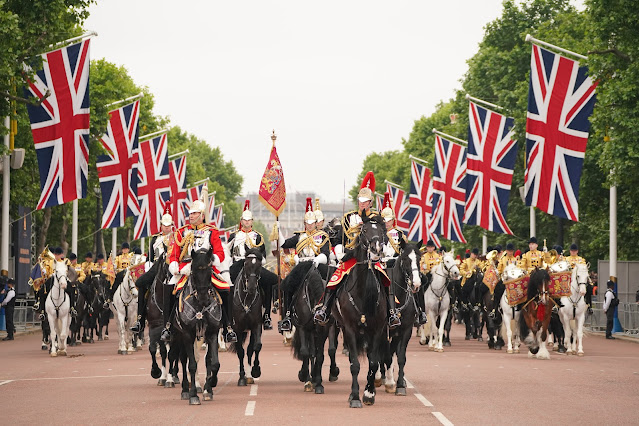I remember being told about Royal Peculiars on a tour of Westminster Abbey on a previous visit. Given it's central role in the upcoming coronation I went searching for an easy to digest explanation of what a Royal Peculiar actually is. From angoltopia.net :
"Since the English Reformation, when King Henry VIII split with the Catholic Church and created the Anglican Church so he could grant himself an annulment, the monarchy has held a certain sway over Christianity in the United Kingdom. While the Sovereign is also the head of the Anglican Church, it’s more a ceremonial position as the Archbishop of Canterbury acts as the Anglican Church’s de facto administrative head. However, there are some Anglican churches that are still under the Sovereign’s direct control, which are referred to as Royal Peculiars within the church parish system.
Church parishes have been around since the days of the Anglo-Saxons. Most are under the control of their diocese, a church district that’s administered by a bishop. Sometimes, however, a church would be created out of land donated by a local lord. These churches were exempt from the diocese authority and referred to as donative parishes, or “peculiars.” Peculiar churches often had their own archbishop or bishop, and if it was a cathedral, its own dean and chapter. In the 19th Century, Parliament did away with nearly all peculiars with the exception of Royal Peculiars, and any non-royal peculiars now fall under the jurisdiction of their individual diocese.
In the modern era, there are over a dozen Royal Peculiars, with the vast majority located in London. These include some obvious churches, such as Westminster Abbey, officially known as the College Church of St. Peter, Westminster. Westminster Abbey also contains the King Henry VII Chapel, which is the chapel of the Order of Bath. A number of other Royal Peculiars can be found within London palaces, such as the Chapel Royal and the Queen’s Chapel at St. James’s Palace, the Chapel Royal at Hampton Court Palace, and the Chapel of St. John the Evangelist and the Chapel of St. Peter ad Vincula in the Tower of London. The Chapel of St. Mary Undercroft was once the crypt of St. Stephen’s Chapel in Westminster Palace. Other Royal Peculiars in London include the Royal Foundation of St. Katherine, Temple Church, and the King’s Chapel of the Savoy, which is the chapel of the Royal Victorian Order.
Still, other Royal Peculiars exist outside of London, including the Chapel Royal at Holyrood Palace in Edinburgh. In Cambridge, the Church of St. Edward the Martyr is one of the only Royal Peculiars not associated with a palace or Royal Order and is considered the first church where an “openly evangelical” sermon was preached at the start of the English Reformation (and the church is sometimes considered the “Cradle of the English Reformation”). Naturally, the Market Town of Windsor has two Royal Peculiars, one known as St. George’s Chapel in Windsor Castle, and the other is the Royal Chapel of All Saints located on the grounds of the Royal Lodge in Windsor Great Park. There are also a number of churches that were once Royal Peculiars but were eventually turned over to the control of the local diocese for one reason or another.
Royal Peculiars have often been popular sites for Royal weddings,
with many having been conducted either at Westminster Abbey or the
Chapel of St. George. Additionally, most Royal Peculiars are actually
closed to the public, though there are three notable exceptions in
Westminster Abbey and St. John’s Chapel, and the Chapel of St. Peter ad
Vincula in the Tower of London. In these churches, you can feel the
connection not only to God, but to the history of past Royals stretching
all the way back to King William I. As such, their historical and
cultural significance cannot be understated when it comes to the Royal
Family and to the United Kingdom. "











.jpg)












